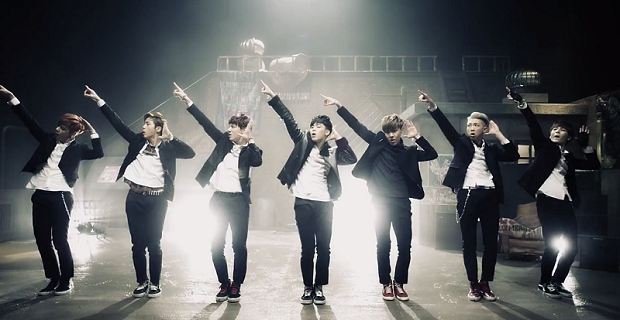K-POP!
 image source: https://www.google.com/url?sa=i&url=https%3A%2F%2Fseoulbeats.com%2F2016%2F05%2Fsb-dance-exchange-4-bts%2F&psig=AOvVaw0nfcqjZKcZczLLKZL53j80&ust=1625991989947000&source=images&cd=vfe&ved=0CAsQjhxqFwoTCICLobKK2PECFQAAAAAdAAAAABAb
image source: https://www.google.com/url?sa=i&url=https%3A%2F%2Fseoulbeats.com%2F2016%2F05%2Fsb-dance-exchange-4-bts%2F&psig=AOvVaw0nfcqjZKcZczLLKZL53j80&ust=1625991989947000&source=images&cd=vfe&ved=0CAsQjhxqFwoTCICLobKK2PECFQAAAAAdAAAAABAb
Our first introduction to the modern dances of today is a popular danced called, K-pop. Which is also known in Korean as: (케이팝; RR: keipap), is short for popular Korean music, which originates in South Korea. It is influenced by many different and various types of dances around the globe, mainly: pop, experimental, rock, jazz, gospel, R&B, hip hop, reggae, electronic dance, country, folk, and classical. The history of it came from the first ever boy K-pop group, the boy band Seo Taiji and Boys in 1992. Their music modernized South Korea’s contemporary music.
The modern ‘Idol’ culture started with the boy band H.O.T. in 1996. They made this genre of music boom in an incredible speed. But there was a sudden slump in early K-pop, from 2003 TVXQ and BoA started a new generation of K-pop idols that broke the music genre to Japanese markets and started to become popularized internationally today. Through TV shows, and Dramas, K-pop spread very quickly and massively. Now the current spread of K-pop or Korean entertainment is called the, ‘Korean Wave’, which is now seen throughout Asia, Africa, Australia, the Middle East, and throughout the Western world, gaining them a global audience.
“K-pop” became popular in the 2000s. In the past, South Korean pop music was called gayo (가요). And “K-pop” was a generic term used for popular music in South Korea. In 2018, K-pop had boomed and became a ‘power player’. In 2019, K-pop was ranked at number 6 among the top ten music markets worldwide, with BTS and Blackpink cited as artists leading the market growth. By 2020, K-pop experienced a record-breaking year, where it experienced 44.8% of growth and made itself the fastest major market of the year.
References:
Hartong, Jan Laurens (2006). Musical terms worldwide: a companion for the musical explorer. Semar Publishers. p. 15. ISBN 978-88-7778-090-4.
Laurie, Timothy (2016), “Toward a Gendered Aesthetics of K-Pop”, Global Glam and Popular Music : Style and Spectacle from the 1970s to the 2000s: 214–231
Cho, Chung-un (March 23, 2012). “K-pop still feels impact of Seo Taiji & Boys”. The Korea Herald.
“The Root of K-Pop: The Influences of Today’s Biggest Acts”. Billboard.
“South Korea’s pop-cultural exports: Hallyu, yeah!”. The Economist. January 25, 2010.
JungBong., Choi (2014). K-pop – The International Rise of the Korean Music Industry. Maliangkay, Roald. Hoboken: Taylor and Francis. pp. 66–80. ISBN 9781317681809. OCLC 890981690.
Song, Cheol-min (2016). K-pop Beyond Asia. Korea: 길잡이미디어. pp. 37–46. ISBN 9788973755981.
“케이팝”. terms.naver.com.
“정보길잡이 상세보기 | 국립중앙도서관”. www.nl.go.kr.
Kelley, Caitlin (April 3, 2019). “K-Pop Is More Global Than Ever, Helping South Korea’s Music Market Grow Into A ‘Power Player'”. Forbes.
“2021 State of the Industry” (PDF). International Federation of the Phonographic Industry. March 23, 2021.
https://thediplomat.com/wp-content/uploads/2020/01/sizes/td-story-s-1/thediplomat-2020-01-23-1.jpg

